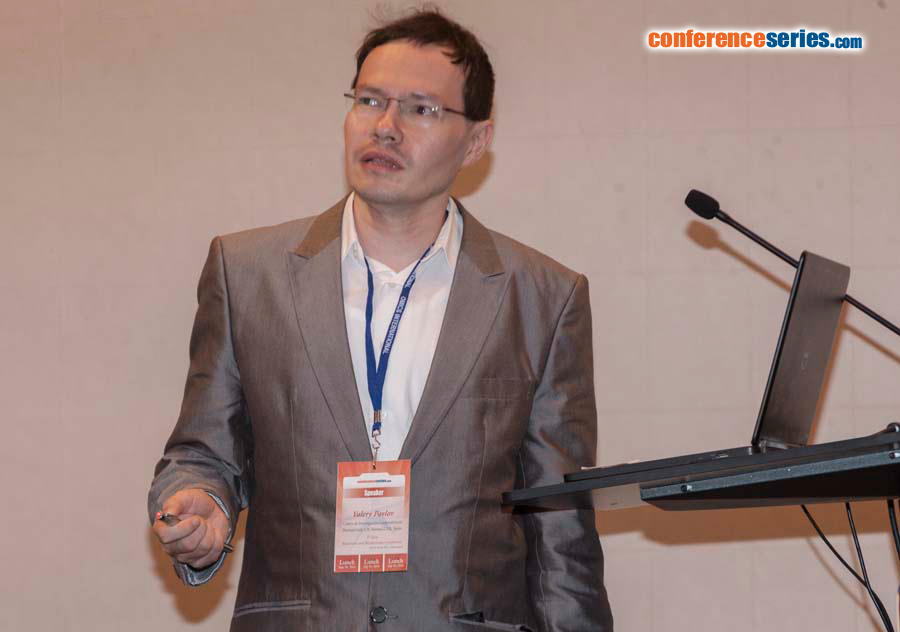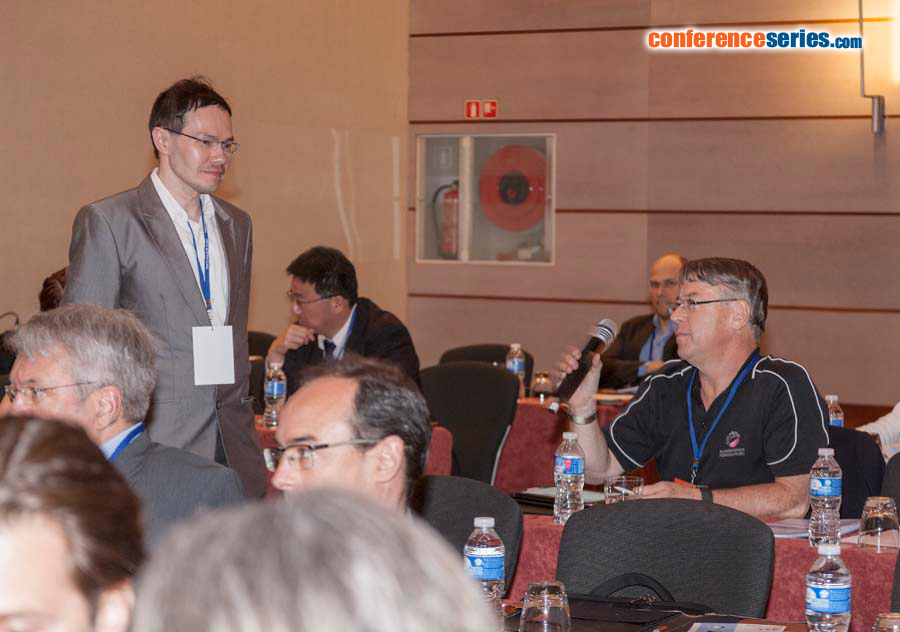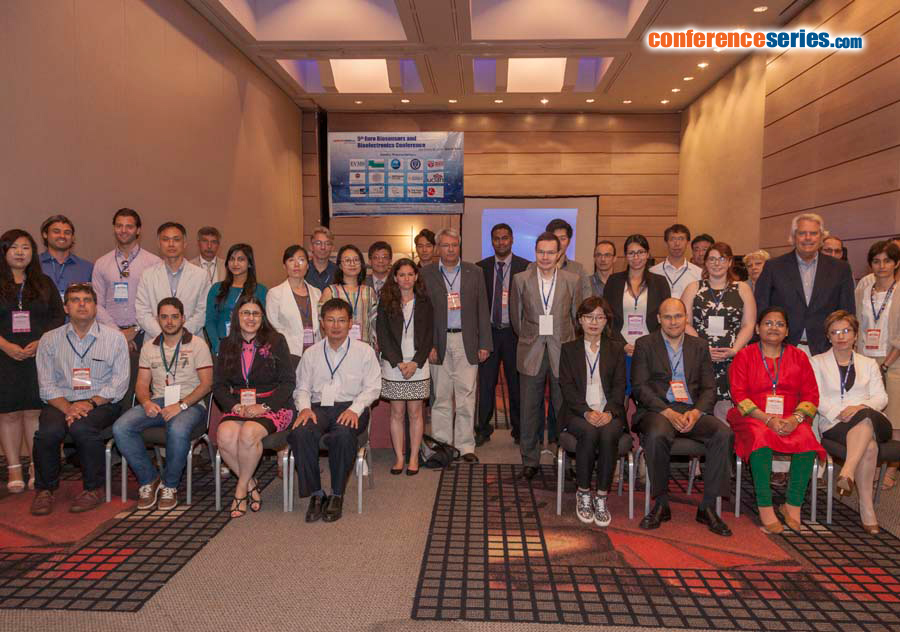
Valery Pavlov
Centro de Investigación Cooperativa en Biomateriales CIC biomaGUNE, Spain
Title: Enzymatic synthesis and etching in situ of gold and semiconductor nanoparticles in biosensing
Biography
Biography: Valery Pavlov
Abstract
Fluorogenic enzymatic assays are based on the biocatalytic cleavage of bonds between presynthesized organic fluorescent molecules or fluorescent semiconductor nanoparticles, so called quantum dots (QDs) and quenching moieties. They suffer from insufficient quenching of fluorophores by quenchers resulting in high background signals. We pioneered assays relying on biocatalytic formation of CdS QDs with low background signals, higher quantum yield, reduced photo-bleaching and lower costs. The diameter (2-3nm) of the resulting SNPs is controlled by the nature of capping agents. We discovered a facile, mild and inexpensive enzymatic etching method for resizing of CdS QDs. It was found out that the biocatalytic process involving bromide, Horseradish Peroxidase (HRP) and H2O2 decreased the size of semiconductor CdS QDs. Thus, this phenomenon can be applied to resizing of semiconductor CdS QDs under mild physiological conditions and rapid and sensitive detection of H2O2 and HRP It was proven that CdS QDs immobilized on polyvinyl chloride microspheres can be etched biocatalytically too. We discovered for the first time that HRP is able to produce free radicals which oxidize gold nanorods (AuNRs) and semiconductor QDs. We introduced novel bio-analytical assays based on enzymatic etching of inorganic nanoparticles. HRP is able to induce a gradual oxidation of the AuNRs in the presence of trace concentrations of H2O2 and halide ions. As a consequence, other enzymatic reactions, carried out by Glucose Oxidase (GOx) can be easily coupled to the HRP activity assay, thereby allowing for the detection of different amounts of glucose.







